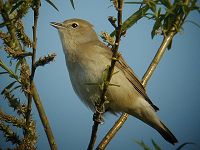Conservation
|
Conservation has always played a part in the valley, with areas of open water and marshland alongside the Rother prior to opencasting. These attracted migrating birds which use the river for navigation as they travel north and south during the spring and autumn migrations.
A selection of recent wildlife photographs taken by local photographer Alan Weaver can be seen here.
|  |
Careful conservation work has reconstructed the site, improved this particular habitat, and created several new ones, increasing the diversity of plants and animals within Rother Valley.
The birdlife of the park has been the focus of continual study since the park opened, with 226 different species recorded in the past 2 decades, one of the most recent additions to the list being a American Widgeon recorded on the 23 April 2008.
Four major habitats benefit from the conservation work practised in the park. These are
Woodland
Wetland
Grassland
Hedgerows
The Park's Ranger Service continues to develop a range of conservation and environmental activities for organised groups, schools and colleges. These include looking at pond life, woodlands, grasslands and birds. Examples of these are represented in an exhibition in the parks visitors centre. Anyone making a study of the park may be interested in the Student Education Pack now available.
The success and popularity of the park, for both visitors and wildlife, sometimes creates conflict between user groups. Everyone visiting the Park can help by respecting wildlife, plants and the environment so future visitors are able to enjoy and appreciate it.
